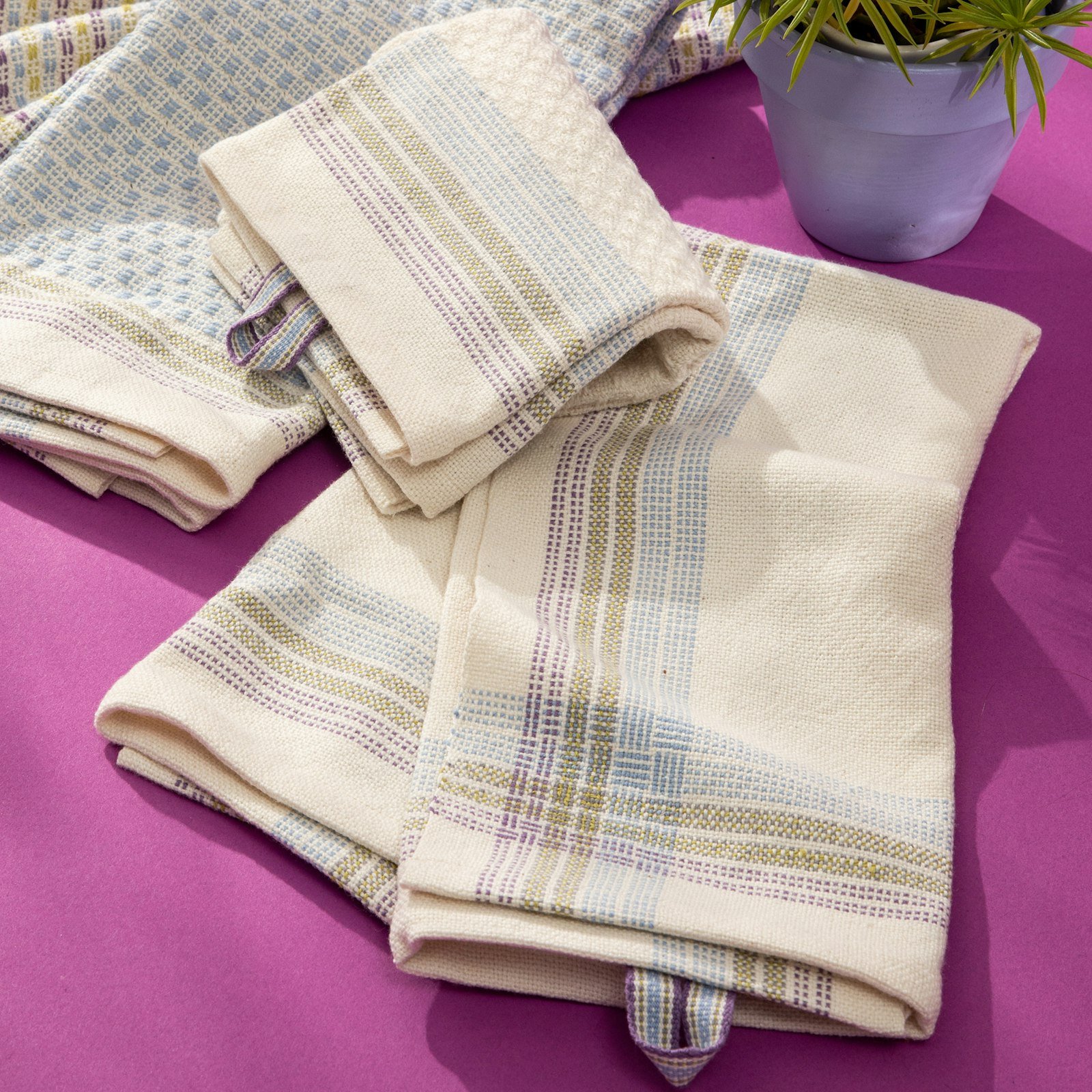I’ve always assumed that log cabin in weaving was somehow related to log-cabin designs in quilting. Maybe they were at one point. Many log-cabin quilts play with dark and light values within the patterned squares and use values to create overall designs and patterns. Whether they are quilted or woven, both types of log cabin are considered sophisticated but not difficult and are often considered good patterns for beginners. But the similarities seem to end there: A log-cabin quilt square starts with a center square that is built upon with “fabric logs” of increasing lengths to create the full square.
 Log-cabin quilt block. Photo contributed to Wikimedia Commons by Conner Prairie living history museum in Fishers, Indiana, United States, which preserves the William Conner home.
Log-cabin quilt block. Photo contributed to Wikimedia Commons by Conner Prairie living history museum in Fishers, Indiana, United States, which preserves the William Conner home.
Log-cabin weaving patterns don’t necessarily have a center point. The patterns are based on alternating values 1 end or 1 pick at a time. Our eyes key in on the values rather than warp versus weft. An interruption in the alternating values in warp or weft makes it seem as if the pattern changes directions. Log cabin often has a 3-dimensional quality: Warpwise stripes appear to weave over and under weftwise stripes and vice-versa as if ribbons had been woven instead of thread.
Log cabin is plain weave and can be woven on any loom with two or more shafts. Log cabin is often classified as a type of shadow weave, and both shadow weave and log cabin are part of the color-and-weave family. We tend to call all of them structures when in fact none of them are. They are all seemingly magical designs created by playing with values.
 Barbara Mitchell’s Shifting Shadows Shawl uses ribbons of log cabin to outline twill color-and-weave squares.
Barbara Mitchell’s Shifting Shadows Shawl uses ribbons of log cabin to outline twill color-and-weave squares.
You don’t need to look further than the cover of Handwoven May/June 23 to see what I mean about the woven ribbons of log cabin. Barbara Mitchell used them to outline her twill color-and-weave squares. They show up again in the borders of Malynda Allen’s Prairie Bloom Towels (shown at the top) in the same issue. And, if you want to see why log cabin is considered a subset of shadow weave, look at the close up of one of Annette Swan Schipf’s Fraternal Twins baby blankets shown below. You’ll see ribbons, but they aren’t as distinct because although she threaded her loom in a log-cabin color order, she didn’t treadle plain weave.
 A close up of one of Annette Swan Schipf’s blankets from Handwoven May/June 2023. shows the similarity of log cabin to shadow weave.
A close up of one of Annette Swan Schipf’s blankets from Handwoven May/June 2023. shows the similarity of log cabin to shadow weave.
It’s easy to see the appeal of log cabin. Just like the quilt pattern that can easily be adapted to many styles, log-cabin patterning is multifaceted and useful.
Weave well,
Susan

